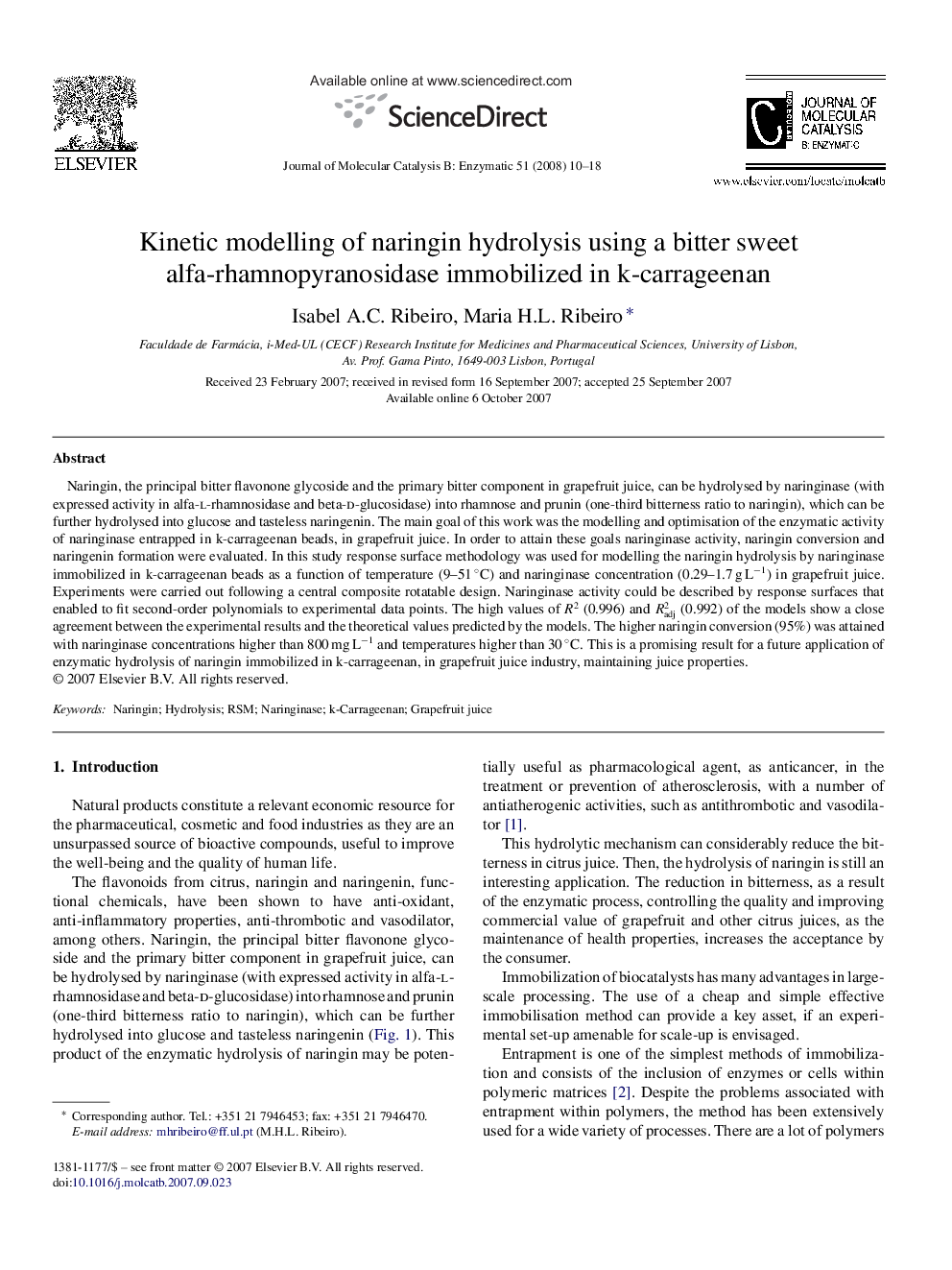| Article ID | Journal | Published Year | Pages | File Type |
|---|---|---|---|---|
| 70905 | Journal of Molecular Catalysis B: Enzymatic | 2008 | 9 Pages |
Naringin, the principal bitter flavonone glycoside and the primary bitter component in grapefruit juice, can be hydrolysed by naringinase (with expressed activity in alfa-l-rhamnosidase and beta-d-glucosidase) into rhamnose and prunin (one-third bitterness ratio to naringin), which can be further hydrolysed into glucose and tasteless naringenin. The main goal of this work was the modelling and optimisation of the enzymatic activity of naringinase entrapped in k-carrageenan beads, in grapefruit juice. In order to attain these goals naringinase activity, naringin conversion and naringenin formation were evaluated. In this study response surface methodology was used for modelling the naringin hydrolysis by naringinase immobilized in k-carrageenan beads as a function of temperature (9–51 °C) and naringinase concentration (0.29–1.7 g L−1) in grapefruit juice. Experiments were carried out following a central composite rotatable design. Naringinase activity could be described by response surfaces that enabled to fit second-order polynomials to experimental data points. The high values of R2 (0.996) and Radj2 (0.992) of the models show a close agreement between the experimental results and the theoretical values predicted by the models. The higher naringin conversion (95%) was attained with naringinase concentrations higher than 800 mg L−1 and temperatures higher than 30 °C. This is a promising result for a future application of enzymatic hydrolysis of naringin immobilized in k-carrageenan, in grapefruit juice industry, maintaining juice properties.
